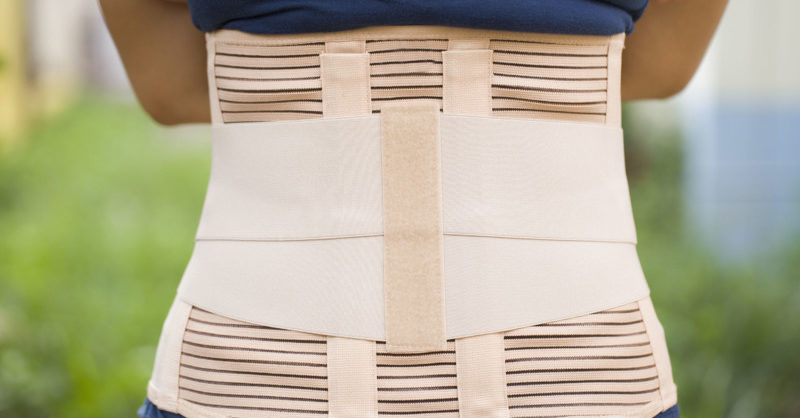5 Spine Conditions That Benefit From Back Braces
Category: Back Pain | Author: Stefano Sinicropi

As we spoke about in a previous blog, there are a number of benefits (as well as some drawbacks) of using a back brace as a form of treatment for your spinal condition. Back braces are the closest thing we can get to a cast you might see on someone’s arm or leg, because unfortunately we can’t immobilize the spine to the same extent as our limbs. Braces do a pretty good job of limiting mobility and preventing pain from movement, but they also serve an important purpose by stopping conditions from worsening. Today, we take a look at five spinal conditions that can benefit from a back brace.
Scoliosis
Back braces are a common treatment technique for anyone suffering from scoliosis. For those of you unfamiliar with the condition, scoliosis is a condition that is categorized by an abnormal lateral curve of the spine. You won’t fix the condition by wearing a brace, but as we alluded to above, you can prevent it from getting worse, which is huge when it comes to scoliosis management.
Spinal Fractures
Another reason doctors and surgeons recommend a back brace is to help stabilize repairing structures. A spinal fracture doesn’t always need surgery, but it does need to be immobilized and stabilized to facilitate healing. There aren’t many better options for spine immobilization and stabilization than a back brace!
Spondylolysis
Spondylolysis is a condition brought on by degeneration in your spinal discs. When this occurs, a doctor may recommend what’s known as a Williams brace. This type of brace is rigid, but it has a front elastic band that allows you to bend forward but limits bending from side-to-side, which can exacerbate spondylolysis.
Compression Fractures
Tony Romo is currently wearing a hyperextension brace to help him heal from the compression fracture he recently suffered. A hyperextension brace is designed to limit front bending, which is something you’ll want to avoid if you’re dealing with a compression fracture near the joining of the thoracic and lumbar spine. A hyperextension brace reroutes pressure to your chest and public bone to support the injured area of the spine.
Whiplash
Whiplash injuries affect the cervical portion of your spine, and one of the best management strategies is immobilization followed by progressive range of motion exercises. There are special types of cervical spine braces that limit your neck’s range of motion so that the injured tissues are protected. Braces are generally worn for a duration of the day and then removed during rehab and exercise sessions until the brace is no longer needed at all.